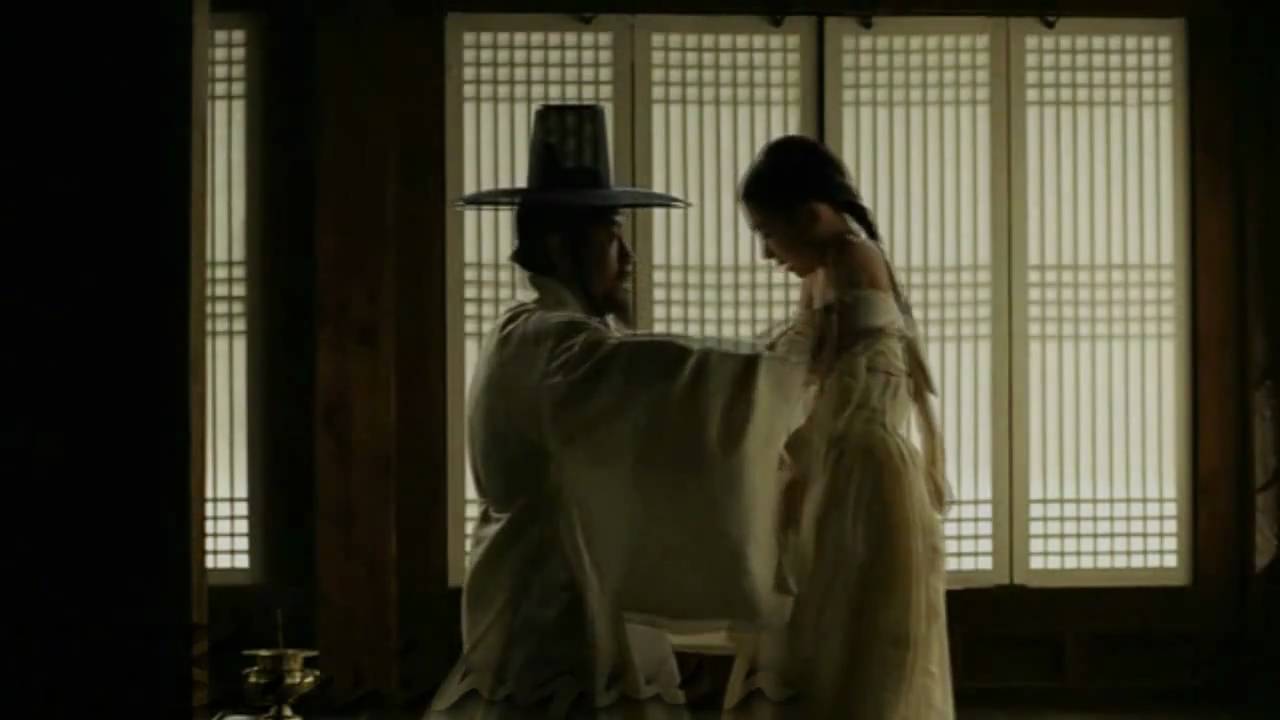By Chlotrudis Independent Film Society
Rating: 4 cats
Director: Yun-su Jeon
Starring: Dae-sung Choi | Ja-Hyeon Chu | Min-sun Kim | Nam-gil Kim | Yeong-ho Joo

Original language title: Mi-in-do
Country: south_korea
Year: 2009
Running time: 108
IMDB: http://www.imdb.com/title/tt1330206/
Jason says: “Passion is at the core of PORTRAIT OF A BEAUTY, both that of one person for another and a person for his or her art. The former comes across loud and clear; the heat on this film is dialed almost all the way up. The latter, while there and important, doesn’t always come through quite as well as it perhaps could, although perhaps that’s fitting, considering the love both the film and its subjects have for the world’s earthly and sensual delights, in contrast to the abstract.
“The film opens during Korea’s Joseun dynasty, with people admiring a young boy’s artwork, but when he is asked to take brush in hand, he freezes, wetting himself. His enraged father comes to look for him after he has fled the room, only to find the boy has hung himself. That’s when the true story emerges: Despite his father’s ambitions, the boy has no talent for art; his sister Yun-jeong has been filling his portfolio and allowing him to pass it off as his own. The father is further enraged, blaming the girl for her brother’s death but also insisting she continue the deception, disguising herself as a boy and going off to the art academy under Yun-bok’s name. She does, and quickly becomes a favorite of the court artist, Kim Hong-do (Kim Yeong-ho); however, when the adult ‘Yun-bok’ (Kim Min-sun) meets mirror maker Kang-mu (Kim Nam-gil), he soon discovers her secret and they fall in love, which not only adds a forbidden erotic streak to her art, but threatens to expose her in a time when women were not allowed to become artists.
“Though several of the characters are actual historic figures, the premise advanced in the 2007 novel on which the film is based, that Shin Yun-bok (also known as ‘Hyewon’) was actually a woman, is fictional, so far as anybody knows. It does make for an intriguing scenario, albeit one which requires some suspension of disbelief if Yun-jeong was really as beautiful – and the other students as masculine – as presented in the film. It also leads to the question of just what her father’s plan was – when sending her off, he makes comments about how artists are brought down by their best pupils, but what does he mean? That Yun-jeong would succeed Hong-do as court artist, or that he intended to reveal the deception in such a way as to ruin Hong-do? Either way, the long-term reprecussions of that plan don’t seem to be very well thought out.
“Of course, the plan also relies on Yun-jeong voluntarily following along, and why she’d do that is sometimes unclear. Not always – there are plentiful scenes involving her studying directly under Hong-do where she seems caught up both in being allowed to paint and the process of learning. The film accidentally disguises this a bit by having so many of the early scenes where she is practicing and discovering her interest in depicting the real, sexual sides of people also part of her and Kang-mu falling in love. The importance of studying under a master, and potentially being recognized, isn’t as strongly articulated, especially once Kang-mu voices the idea of simply leaving the city.
“Fortunately, the love story with Kang-mu is good enough to carry most of the film, and the connected story of Yun-jeong’s sexual awakening is even stronger. Like the paintings we see Yun-jeong draw, the film is quite open with its eroticism, but almost never exploitative. We see plenty of bare flesh, but it’s often in the context of Yun-jeong learning what it is like to love, if not live, as a woman. It’s a powerful image of discovery, and Kim Min-sun portrays it wonderfully. Almost as wonderful is how genuine the relationship between her and Kim Nam-gil’s Kang-mu is; it doesn’t come across as a first crush, or a love that exists mainly because it is forbidden, but as two people who enjoy every aspect of each other, body and soul.
“As long as the film focuses on that, it does very well; it falters a little when it gets into court intrigues and trying to conceal Yun-jeong’s secret. To be honest, I had a hard time distinguishing many of the male characters in the movie: With everyone wearing the same kinds of robes, hats, and facial hair, it sometimes took me an extra beat or two to figure out whether a scene dealt with Hong-do, the King, or a fellow student who resented ‘Yun-bok.’ Indeed, I thought it was the latter who spotted Yun-jeong and Kang-mu making love at night, making Hong-do’s sudden obsession a little puzzling at first.
“Director Jeon Yoon-seo has created a lovely film to look at, featuring exquisitely detailed period sets and costumes. He does a nice job of showcasing Hyewon’s art within the movie without making scenes seem posed or artificial, and draws good performances from his cast. I would like it a little more if he had shown us more of Yun-jeong’s and Hong-do’s respective techniques, making this a film just as much about art as passion.
“Still, it’s a fine love story, sexy and emotional. Even if it likely has no basis in fact, it’s worth checking out. 4 cats
“Seen 19 July 2009 at Concordia Theatre Hall (Fantasia Festival)“
